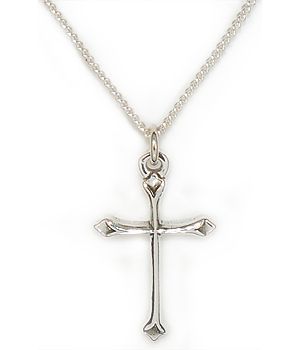| My Blog Site |  |
whsblog.com OHS and Safety | |
|
||
Don’t get Cross About Wearing a Cross
There have
been a few cases recently about the right to display religious symbols, and the decisions of the courts have not
always been the same. In Case 1 , the employee was a member of the check-in staff at British Airways (BA). She had worked there for 13 years and considered herself as ‘a committed Christian’. The issue arose out of her wearing a cross around her neck. BA had a dress code and in past years, the cross was worn under her clothing and was not obviously visible. When the uniform design was changed, she started wearing it openly, despite being told not to on three occasions. After the third time, she was sent home from work to change her clothing and pay was deducted for the time of absence from work. After the incident received critical media coverage, British Airways relented and allowed her to openly wear the cross, but refused to compensate her for her lost earnings. The woman lodged a discrimination claim with the British Employment Tribunal, but was unsuccessful. The Tribunal found that it was not a mandatory requirement of her religion to wear a cross, merely her own preference to do so. No other employee of the airline had made a similar request, so it was not an issue relating to Christianity in general and no religious discrimination had occurred. After two appeals against this decision were dismissed, the case went to the European Court of Human Rights (ECHR). The Court found that wearing a cross was a manifestation of the employee’s religious beliefs. A fair balance had to be found between the employee’s beliefs and the employer’s requirements. In this case, the importance of the latter (basically, protection of its corporate image) had been overstated and therefore the employee had been discriminated against In Case 2, a nurse, employed for 21 years and was also a committed Christian, breached the hospital’s dress code. They had a policy of what could, and what could not be worn. The restrictions, it was claimed, were necessary to protect hygiene. It also added that the wearing of religious items required management approval and that permission ‘should not be unreasonably withheld’.
As in case 1, new uniforms were the catalyst. Management requested that the employee not wear the cross, as it could no longer be concealed by the uniform. It claimed that a patient could grab and possibly break the chain to which the cross was attached, and this could either cause injury to either the patient, the employee, or both, and that contact between the cross and an open wound could risk infection. This case was also heard by the ECHR who ruled differently to the ruling in case 1. The Court applied the same ‘balance of interests’ tests, but this time found that legitimate occupational health and safety concerns were the reason for the employer’s decision. These concerns were more important than an employer’s corporate image, and therefore the balance fell in favour of the employer. In two other cases employees who also claimed they had suffered religious discrimination lost their appeals. A marriage celebrant disciplined by local council for not being prepared to conduct civil partnership ceremonies because of his beliefs. The second case involved a sex therapist who was dismissed from his job after indicating he might have a conscientious objection to providing sex therapy to a same-sex couple on account of his Christian faith.
The Australian Point of View Discrimination in employment on the ground of lawful religious belief or lawful religious activities is unlawful in Australia, although the specific provisions vary according to the relevant federal or State anti-discrimination legislation. Taking action against an employee because he/she wore ‘religious’ clothing or other items could amount to discrimination under this legislation. However, there are exemptions from this legislation where an employer’s decision or conduct is necessary to comply with other legislation as in case 2 above. An employer that claimed such an exemption on the ground of some other legislation, such as the WHS Act, would have to be able to prove that its otherwise discriminatory conduct was reasonably necessary to ensure compliance with the other legislation. It may also be relevant to distinguish between items that are ‘compulsory’ for a person of a particular religious faith to wear, and items which the religion does not mandate, but the employee may choose to wear. |
All information is of a general nature. Readers are advied to make
their own enquiries before relying on any material in these
pages

